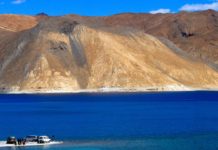We, humans, have so far conquered the moon, we even have sent out probes to our neighboring red planet and to distant interstellar places. But the sun has always been off the limits.
Well, at least that is how it has been so far- but it seems things are going to change. For NASA, the space organization that has a record of realizing science fictions, is planning to send a robotic probe to our nearest star.
Next year, ie in 2018, NASA is planning to launch the Solar Probe Plus mission to the sun. The distance between planet earth and the sun is about 93 million miles or 149 million kilometers. And the probe is supposed to get within the range of 4 million miles (6 million kilometers) from the sun.
4 million miles may sound like a lot of distance and not close enough, but it is not free of challenges. The biggest challenge, as you can guess, is keeping the probe from melting. To withstand the heat the scientists in charge have come up with a 4.5-inch-thick protective carbon composite shield. This outer shield will protect the insides even at 2500 F.
“This is going to be our first mission to fly to the sun,” Eric Christian, a NASA scientist at Goddard Space Flight Center in Greenbelt, Maryland was quoted as saying. “We can’t get to the very surface of the sun,” he added while affirming the importance and significance of this mission.
This mission is expected to find out answers to a few questions that have kept astronomers baffled for a long time now. Firstly, why is the atmosphere of the sun, named Corona, much much hotter than the surface? Secondly, how exactly does solar wind (stream of charged particles blown in all directions) get its speed? And lastly, why the star at times emits high energy particles that are harmful to astronauts and space crafts?
“This is going to be our first mission to fly to the sun,” Eric Christian, a NASA research scientist at Goddard Space Flight Center in Greenbelt, Maryland was quoted as saying. “We can’t get to the very surface of the sun,” but the mission will get close enough to answer three important questions, he said.



























